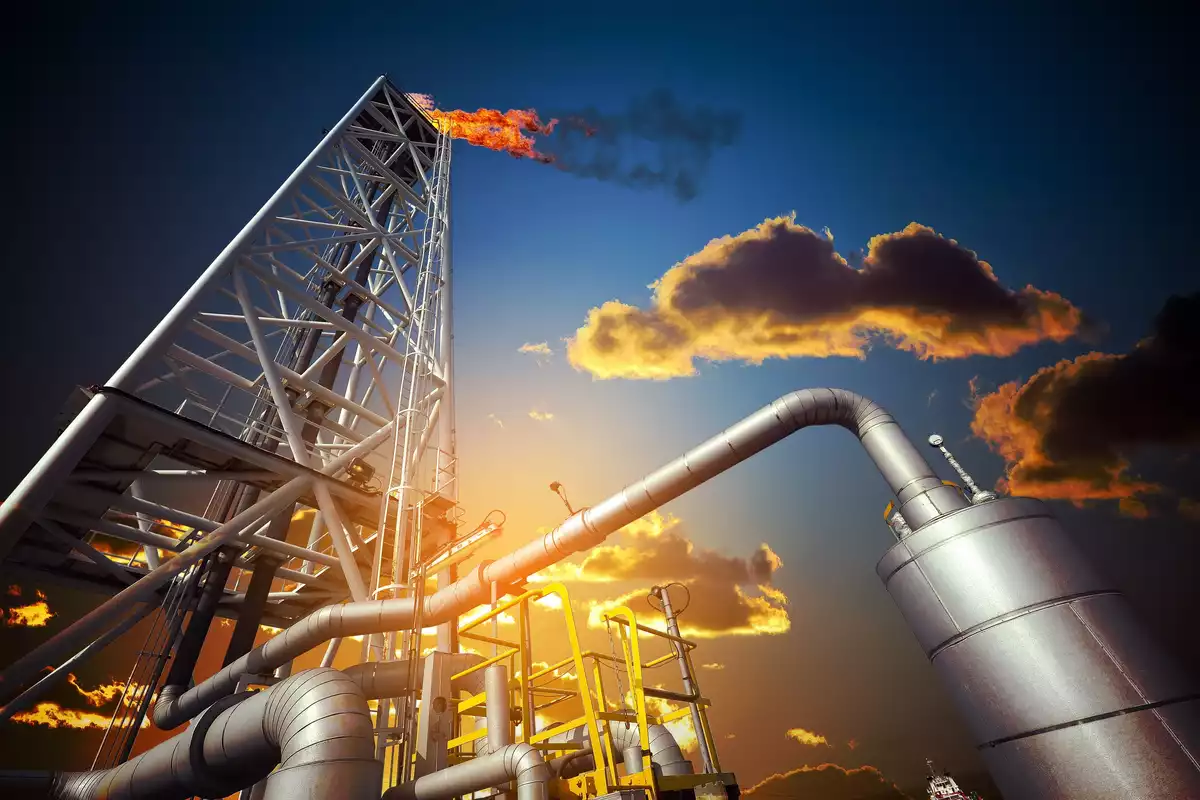
Photo credit: adlittle.com
Kazakhstan plans to boost its natural gas production from 59 billion to 74 billion cubic meters by 2030, according to Deputy Energy Minister Alibek Zhamauov, who shared the goal during the Energy Trends: Gas & Petrochemicals forum in Astana, The Caspian Post reports citing foreign media.
Production Growth Driven by Major Fields and New Developments
In 2023, Kazakhstan produced 59 billion cubic meters of gas, with output projected to rise to 62.8 billion cubic meters in 2024. This growth will be driven by ongoing production at the country’s largest fields, Tengiz, Karachaganak, and Kashagan, as well as the launch of new sources, including the Rozhkovskoye, Anabai, and Urikhtau fields.
“Our goal is to increase gas production to 74 billion cubic meters by 2030,” Zhamauov stated. “But the key task is to process gas within the country as efficiently as possible to supply our citizens and industry, as well as to create a raw material base for gas chemistry.”
Currently, over 85% of Kazakhstan’s gas production comes from the Tengiz (26%), Karachaganak (41%), and Kashagan (19%) projects. By the end of 2024, marketable gas output is expected to reach 28.7 billion cubic meters, including Tengiz (8.7 bcm), Karachaganak (7.5 bcm), Kashagan (4.7 bcm), Zhanazhol (3.3 bcm), and other fields (3.6 bcm). Of this, 21.2 billion cubic meters (79%) will be consumed domestically, while 5.6 billion cubic meters (21%) will be exported.
Zhamauov noted that gas production will increase by 5.9 billion cubic meters, reaching 34.6 billion cubic meters by 2030, due to the introduction of new gas processing plants (GPPs). Two GPPs, with capacities of 1 billion and 2.5 billion cubic meters respectively, will be built at the Kashagan field. A 4 billion cubic meter facility will be developed at Karachaganak, while a plant in Zhanaozen will add another 900 million cubic meters per year.
LNG Plant in Astana
A liquefied natural gas (LNG) plant with a capacity of 75,000 tons per year is also planned for Astana. Chingiz Cherniyazdanov, director of the Kazakh Institute of Oil and Gas (KING), shared details of the project during the forum.
“The Astana LNG complex will be located in the capital’s industrial zone,” Cherniyazdanov said. “We will build the first stage with a production capacity of 75,000 tons per year, as well as a hub for LNG storage. Commissioning is scheduled for 2027.”
The plant will source feedstock from the Saryarka gas trunkline (Kyzylorda-Zhezkazgan-Temirtau-Astana). A storage facility will be constructed to balance seasonal fuel demand during colder months. KING also plans to use the LNG to launch a vehicle conversion service.
Cherniyazdanov added that, following completion of the second string of the Beineu-Bozoi-Shymkent gas pipeline, which will double capacity from 15 to 30 billion cubic meters per year, the LNG plant could expand to a second stage, increasing production to 100,000 tons per year.
The pipeline expansion will be carried out in two phases: from September 2025 to July 2027, and from August 2027 to January 2029.
Expanded Gas Infrastructure and Growing Transit Role
Kazakhstan’s gas transportation network will also be expanded with two new main pipelines, Aktobe-Kostanay and Taldykorgan-Usharal. In addition, the Ministry of Energy plans to increase the volume of Russian gas transiting through Kazakhstan to Uzbekistan.
Zhamauov reported that 1.28 billion cubic meters were transported in 2023. While 2024 projections estimated 3.8 billion cubic meters, actual transit reached 5.6 billion cubic meters. Transit volumes are expected to grow to 7.3 billion cubic meters in 2025 and reach 11 billion cubic meters by 2026.
Meanwhile, Uzbekistan’s own gas production continues to decline. In the first two months of 2025, output fell by 4.2% compared to the same period in 2024, continuing a downward trend that saw production drop from 61.59 billion cubic meters in 2018 to 44.59 billion in 2024.
Share on social media